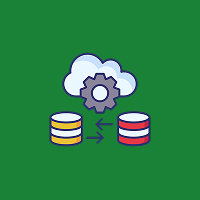Effective database design is affected by how data is structured to be stored, and therefore affects performance, scalability and maintainability. Two of the topic strategies discuss the beliefs of normalization and denormalization.
Normalization seeks to reduce redundancy and improve data integrity, while denormalization is a performance-based belief of putting data together so it can be queried faster. This article will provide an overview of normalization and denormalization. Normalization and denormalization are two different approaches that can influence database design. Which approach works better for you or if a combination approach is what you desire will depend on the needs of your system!
This article will take an in-depth look at normalization and denormalization by providing description of each principle and the advantages, disadvantages and applicable cases.
What is database normalization?
Database normalization is the use of a systematic approach to organizing data into a relational database. The main purpose of normalization is to reduce redundancy (duplicate data) and enhance integrity of data. Normalization is achieved through structuring of large tables into smaller related tables while defining relationships with keys.
Goals of Normalization:
- Minimize duplicate data.
- Avoid update anomalies (observed inconsistencies when you attempt to insert, update, delete).
- Logical data dependencies should be maintained.
- Improve integrity and consistency of data.
Normal Forms
Normalization uses a number of levels called normal forms (NFs), each of which addresses specific types of redundancy and dependency.
Normal Form 1 (1NF):
- Makes certain that all fields have atomic (indivisible) values.
- Removes repeating groups or arrays in a table
Normal Form 2 (2NF):
- applies after 1NF.
- Eliminates partial dependencies; every non-key column only depends on the entire primary key.
Norm Form 3 (3NF):
- applies after 2NF.
- Eliminates transitive dependencies. Non-key columns should not depend on other non-key columns.
Boyce-Codd Normal Form (BCNF):
- is a stricter version of 3NF and addresses certain types of anomalies that 3NF does not.
- Fourth Normal Form (4NF) and Fifth Normal Form (5NF):
- concerns multi-valued dependencies and join dependencies and often require complex designs.
Pros of Normalization
- Improved Data Integrity: Data only needs to change in one location.
- Reduced Redundancy: Save storage space and avoid duplicating data.
- Easy Maintenance: Less complicated updates and deletions involve less room for error.
- Improved Scalability: Can dynamically change a schema as the system grows.
Cons of Normalization
- Difficult Queries: May require multiple joins to extract data.
- Slower Read Performance: Too many joins may reflect poorly on I/O especially in read heavy applications.
- Difficulty Maintaining Complex Schema: Schema can be difficult for newcomers to understand/maintain.
What is Database Denormalization?
Denormalization is adding redundancy to a database schema for performance. This often means merging tables or adding redundant columns to reduce the need for helpful joins.
Denormalization is not the opposite of normalization; it is just a shift from normalizing due to performance considerations.
Why Denormalize?
- Increases Query Performance: Especially if you have reporting systems or dashboards that need to be read quickly.
- Simplifies Complex Queries: The fewer joins that are required, the quicker the query will be, and the easier it will be to write.
- Optimizes Read-Heavy Systems: This is typical in OLAP (Online Analytical Processing) systems.
Benefits of Denormalization
- Faster Data Retrieval: Especially when joining to lots of tables would be prohibitively expensive.
- Simplified Query: Useful for reporting or analytical applications.
- Fewer Joins: Denormalization decreases server overhead in complex queries.
Disadvantages of Denormalization
- Data Redundancy: The replicated entity can exist in multiple places, leading to wasted storage
- Data Inconsistency: It is more susceptible to update anomalies if you are not careful.
- Harder Maintenance: Updating or deleting duplicated values can lead to issues with maintaining consistency.
When to use which
Use Normalization when:
- Your application is predominantly write-heavy (frequent inserts, updates, deletes).
- You are concerned with data consistency/integrity.
- You expect to alter your schema often or main tables will grow over time.
Use Denormalization when:
- Your system is read-heavy (e.g., reports, dashboards).
- Performance optimization is more important than redundancy.
- You have caching/data warehousing.
Real-Life Scenarios
E-commerce Sites:
- Using normalization on transactional data (e.g: orders, payments) allows for some level of accuracy.
- Using denormalization on product catalog or recommendation data allows for faster browsing.
Banking Systems:
- Normalization for customer accounts and transactions.
- Denormalization for customer service dashboards, speeding up the time for getting queries.
Reporting Systems:
- Using denormalized data structures such as data marts or star schemas help execution of complex queries efficiently.
Conclusion
Both normalization and denormalization are essential strategies in the toolbox of a database designer. Normalization is about structure, consistency, and control, denormalization is about speed, simplicity, and performance. Knowing when and how to use them both can affect how well your application performs and scales.
When designing your application, use either or both of these strategies based on the needs of your application, not just based on the theoretical best approach. Also, in many real-life scenarios, using a combination of normalization and denormalization achieved better outcomes.
Contact Us Today













 Database Development
Database Development












































